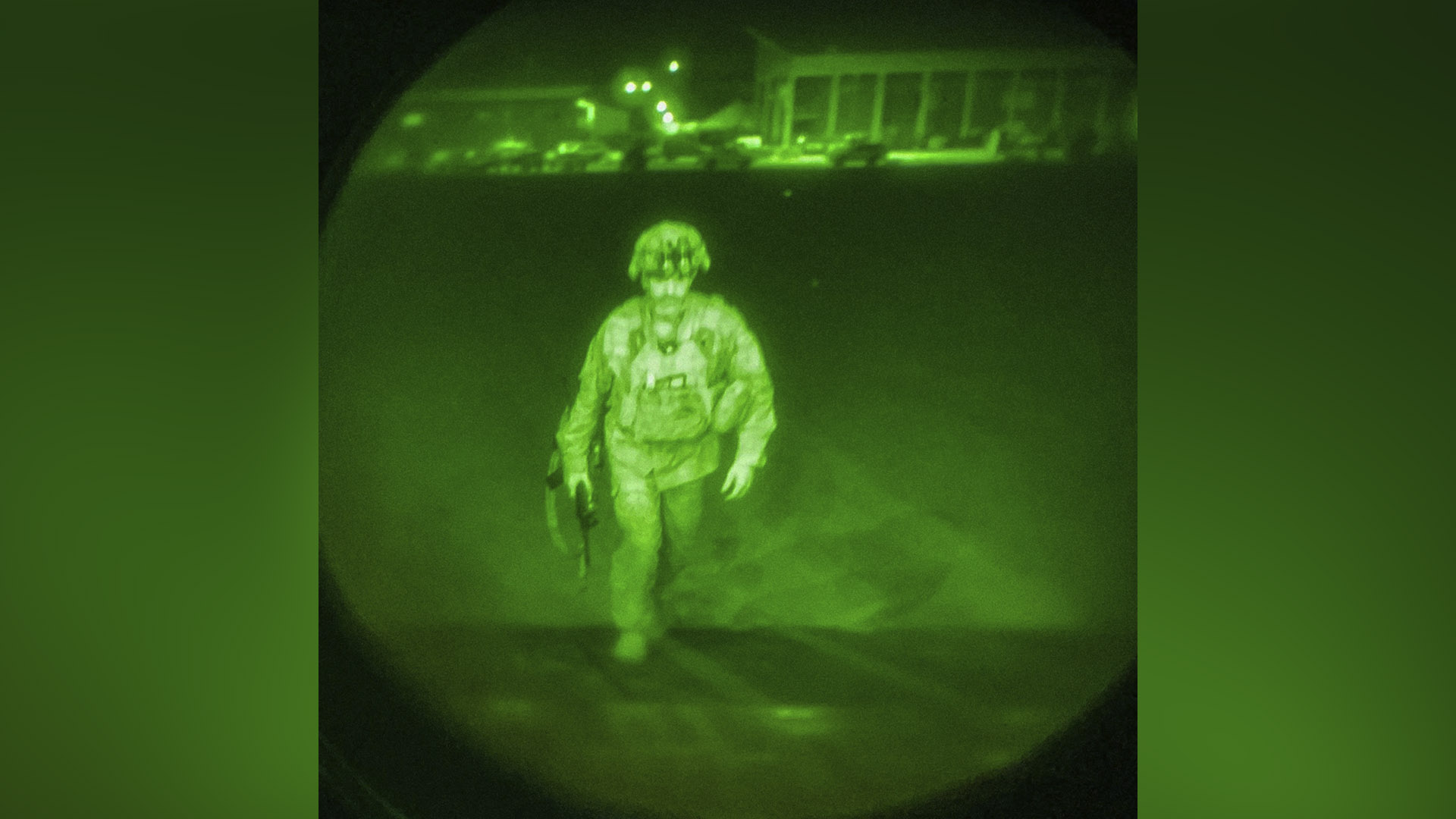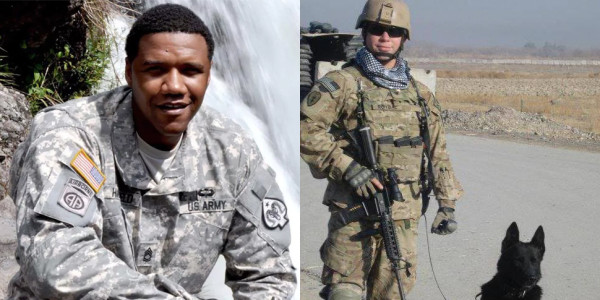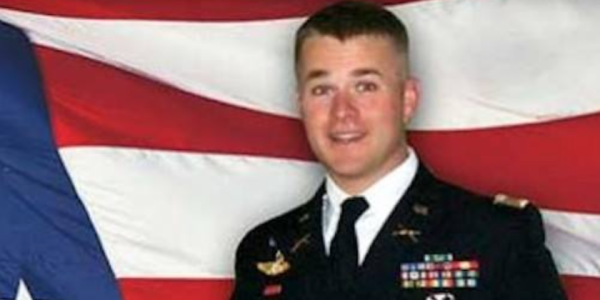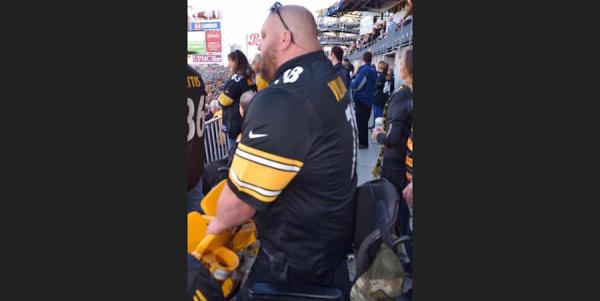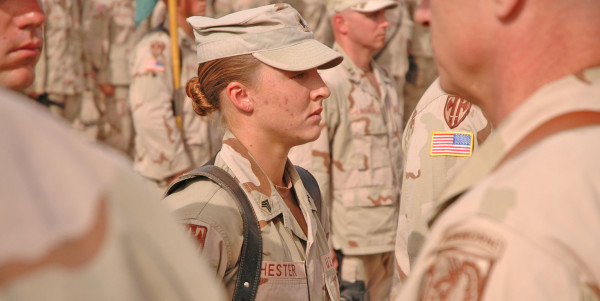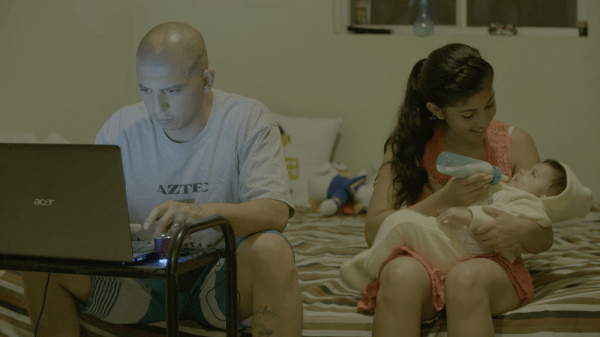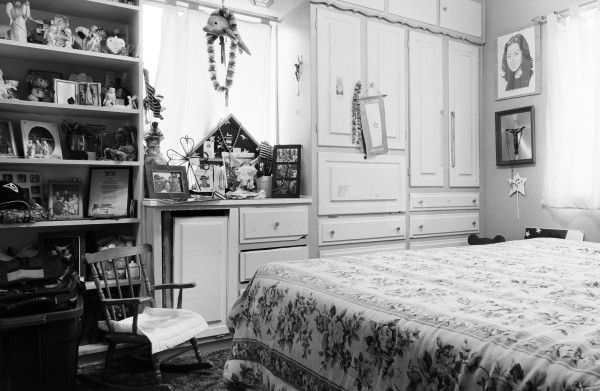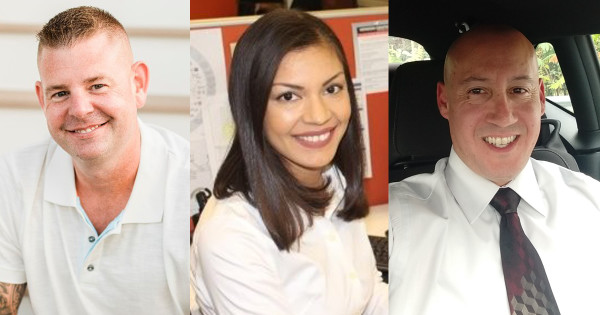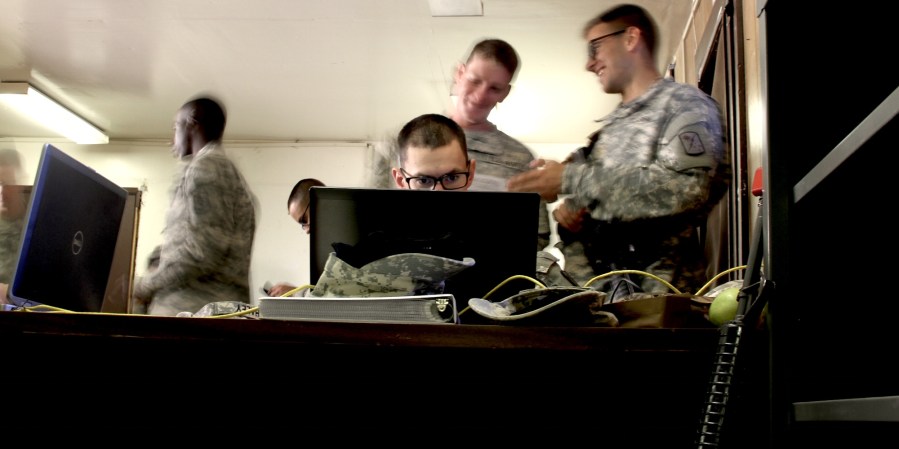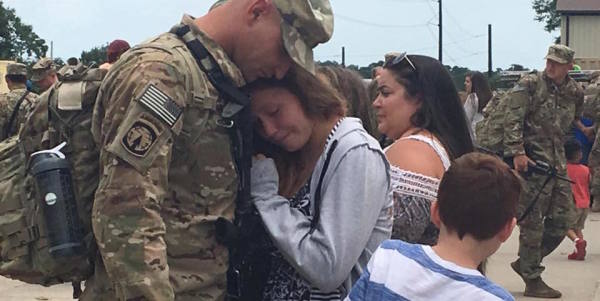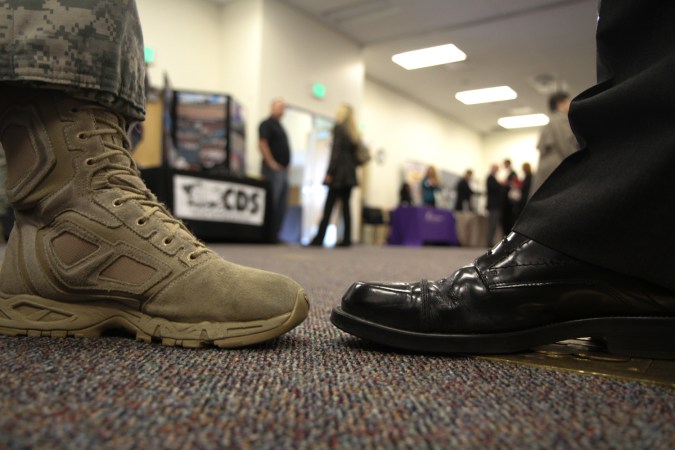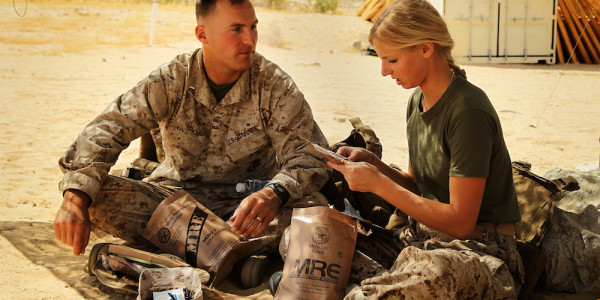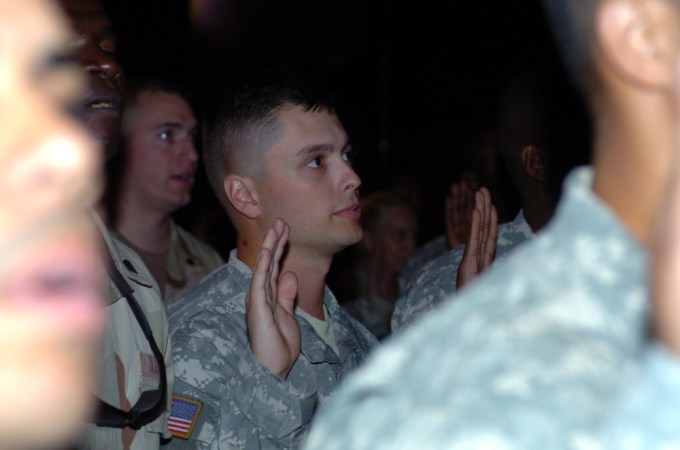Army Master Sgt. Alex Burnett wasn’t expecting this.
Burnett, the public affairs noncommissioned officer in charge at the 82nd Airborne Division, was one of the last soldiers to board an aircraft and leave Hamid Karzai International Airport in August. Ever the photographer, he made a split-second decision once he was on the aircraft: He needed to take a photo of the last man on the ground.
That photo of Maj. Gen. Christopher Donahue, the commander of the 82nd, has since become an iconic image symbolizing the end of the 20-year war in Afghanistan. It has resulted in one article after another, garnering national attention and, in the Washington Post, even some criticism as a “deeply fraught image, which has the potential to do lasting damage.”
But to Burnett, he was just doing his job. He wasn’t using any fancy equipment — he simply put his night observation devices, or NODs, in front of his cell phone camera. He told Task & Purpose at Fort Bragg, North Carolina, last week that he was “dumbfounded” by the amount of attention his photo received, since he’s been taking photos for the Army for over a decade and has never seen a photo get this kind of traction.

“I’m absolutely proud to have been the one to take that photo,” Burnett said. “I’m glad that I got to be there to see that moment, but it still just blows my mind because honestly I was stressed the entire time, like ‘Please be in focus, please be in focus, please be in focus.’”
The deployment to HKIA, as U.S. forces worked to evacuate civilians from the country after the Taliban swept into Kabul, was Burnett’s third to Afghanistan. On Aug. 31, when Burnett boarded the last C-17 alongside other soldiers, the magnitude of the moment was not lost on him.
“It’s funny because in my own little world, I cared about getting this photo right because I mean this is a huge moment,” Burnett said. “I’ve deployed to Afghanistan — this was my third time being in-country, and I know my father deployed to Afghanistan, so many people I know have been a part of this war. … And then when we got in the air, Gen. Donahue came over and I was like, ‘Sir, I got your photo, but I’m not really —” and he was like ‘Dude, it’s over.’”
‘What I really wanted to show was soldiers at their best’
Burnett was a teenager when the Twin Towers fell on Sept. 11, 2001. He watched his father, a special operations aviator who retired in 1999, get recalled to active duty and deployed to Afghanistan.
He said he enlisted in 2005 as a print journalist so he could “get out of Atlanta.” Ironically, that’s the first place the Army stationed him.
His first deployment was to Iraq in 2006. Then, just months after arriving at Fort Bliss, Texas, in 2008, he was deploying again, this time to six countries in a year: Iraq, Afghanistan, Bahrain, Qatar, Kuwait, and the United Arab Emirates. He deployed again to Afghanistan in 2011; was stationed in Germany in 2012 where he rotated through Eastern Europe; and in 2014 he went to Africa to help build hospitals amid the Ebola outbreak.

Then one day, Burnett said he was told he needed to go to Airborne School so he could join the 82nd Airborne Division. He was thrilled to join such a storied unit and has been with the “All American” division for about two and a half years.
But when the 82nd was notified that paratroopers would be rapidly deploying to Kabul in August, Burnett wasn’t originally supposed to go. His boss was going, but because of limited space on the aircraft, it had been decided he would stay behind and assist from Fort Bragg. Plans changed a couple of days later.
The head public affairs officer for the 82nd Airborne Division called back and said Burnett and two other soldiers in public affairs at Fort Bragg — Capt. Matt Visser and Sgt. Jillian Hix — needed to get to Afghanistan. On the evening of Aug. 20, Burnett went home and finished packing, thinking he’d go into work on Saturday and leave on Sunday. But when he arrived on post the next morning, he was told he could be leaving that day instead.
He said he called his ex-wife, who was with their 5-year-old son, and asked if she’d meet him halfway so he could see him before he left, and say goodbye. He wanted to see him one last time, he told Task & Purpose, because “you never know if your ticket’s getting punched.”
“I was hauling ass trying to get to the halfway point where we usually meet, and I got a call saying hey you’re leaving today,” Burnett recalled. He was given orders to report at 1 p.m. that afternoon. He wasn’t going to have time to see his son, so he turned around, went home, threw on his uniform, grabbed his bags, told his girlfriend he was leaving, and walked out the door.

After that, things are a bit of a blur. Burnett said they flew into Kuwait, but because of how many flights were trying to get out of Afghanistan, he and the other public affairs soldiers he was with were having a hard time getting on a flight going to HKIA. Thankfully, the Canadian military had a scheduled flight going into Afghanistan the next day to pick up Afghans coming to Kuwait.
“Capt. Visser and I went to the Canadian compound and we’re like, ‘Hey we’re trying to get into HKIA, can we get a ride?’” Burnett recalled. “And the Canadians — as you know, our best friends to the North — were exactly as you’d expect them to be, like ‘Oh absolutely, yeah, sure, no problem.’”
After touching down in HKIA hours later, the public affairs team hit the ground running. Burnett and Hix — who Burnett described as “the most badass PAO that I have ever met, she is an absolute freakin’ killer” — were focused on capturing photos and video, respectively. Hix has “God hands,” Burnett joked, referencing her ability to shoot video incredibly steady without using a tripod. With Hix covering video, Burnett was free to focus solely on photos.
Their first day on the ground, Hix and Burnett went to every area at HKIA where the 82nd Airborne Division had soldiers. The soldiers pulling guard were doing “exactly what guys on guard do, which is watching a specific point for an extended period of time … hoping for the best and preparing for the worst.” They visited groups of soldiers who were “trying to figure out how to sleep comfortably” during their down-time in the airport hangars, and soldiers who were “playing cards and BSing.”

Burnett and Hix were “grinding,” he said, uploading what they’d captured every six hours or so to their laptops and sending it back to Fort Bragg, and hauling not only their camera and video equipment, but their body armor, ammunition, and rifles everywhere they went.
The mission at HKIA was Hix’s first-ever deployment. She was just 8 months old on Sept. 11, 2001, and enlisted in the Army in June 2018. She said she wasn’t sure what to expect as she got to Kabul other than focusing on capturing the Army’s story.
“A lot of people give you a hard time about it because they don’t understand that being a photographer, or a videographer, or a writer, why you’re actually there is to tell the story, and they may not understand it yet that … this is for history, this is to show you guys, to show your families, what you have done for your country,” she told Task & Purpose.
Burnett echoed a similar view. Since joining the Army, he said he’s “always loved watching soldiers do their jobs,” and on this mission in particular he wanted to show people “the good things our paratroopers were doing.”

“And by good things I mean everything,” he said. “These guys were pulling security late into the night to make sure everybody on HKIA was safe in those last few days, our chaplains doing drives and working with NGOs to get baby food and stuff to hand out to new mothers who were flying out of Afghanistan, our commander leading from the [tactical operations center] … What I really wanted to show was soldiers at their best. And that’s really what I got to see.”
More than 1,000 photos were released by military public affairs during the evacuation, though a chaotic and desperate scene outside the airport walls was captured on social media. Soldiers and Marines were caring for children and holding babies, attempting to process as many people as they could to come into the airport to evacuate, and doing as much as possible to help the civilians in front of them. But a video shot by a Marine infantryman with a GoPro provided an unfiltered look at the chaos unfolding at the airport: huge crowds gathered outside the gates of the airport, Marines ordering civilians to back up as masses of people pushed those at the front of the crowd into barbed wire, a woman sobbing as she’s pulled into safety, and one man hitting others with the butt of a rifle outside the gate, just feet away from U.S. troops.
And soldiers weren’t Burnett and Hix’s only focus. Burnett said he also took a photo of two Marines with their arms around each other in the aftermath of the suicide bombing that killed 13 American service members and dozens of Afghan civilians at Abbey Gate.

“I’m not gonna lie, I was crying,” he said. He gave the photo to the Marine Corps, and said he and Hix offered to take all the photos and videos so the Marine photographers could take a knee. But in “proper Marine form, they didn’t … they were out there in force.” The photos taken during what is known as a “ramp ceremony,” a memorial service during which service members carried the 13 caskets to the planes that would take them home, were later mistakenly released online.
“These photos were posted in error and have been removed from DVIDS,” Army Lt. Col. Karen Roxberry, a spokesperson for U.S. Central Command, said in a statement. “They are provided to the next of kin with the footage from the dignified transfer at Dover [Air Force Base].”
Some of Burnett’s favorite photos from the deployment, he said, are of Afghan children who were inside the airport, who he said started “clowning around” when they saw him with a camera.
“They were just so happy,” Burnett said. “And I had seen so many people not miserable, but terrified, and just trying to get to where these children all were.”

‘I should probably get a photo of the last guy getting out of Afghanistan’
That kind of focus and dedication to capturing important moments continued up to the very last moment, when Burnett was one of the last roughly dozen people to board a plane out of Afghanistan late on Aug. 30, before the Aug. 31 withdrawal deadline.
The remaining U.S. service members “loaded up” onto one of the last buses they had access to, and drove out to the tarmac. They waited as other units finished loading their personnel and equipment. Burnett recalled hearing U.S. helicopters overhead, which eventually landed and were loaded onto the C-17s.
As they neared the moment when Donahue would board the plane as well, Burnett knew he had a job to do.
“I was like, ‘Okay I should probably get a photo of the last guy getting out of Afghanistan,’ which we knew was going to be [Maj. Gen.] Donahue,” Burnett said. He figured Donahue would be the last guy out because it’s just “his leadership style … he didn’t want to get on the aircraft until he knew every single one of his people was on an aircraft ready to depart.”

When Donahue got the thumbs up that everyone was on the aircraft, he “turned around, took one last look at HKIA, and then got on the airplane,” Burnett said, adding that Donahue didn’t pause at the ramp which made it “a little hard for me to get the photo.” The plane took off within minutes.
Since returning from Kabul, Burnett said he hasn’t really processed the end of the war in Afghanistan. It’s been “a constant” in his life since he was 17 years old, and now it’s over, he said.
“I almost couldn’t believe it was done,” he said. “That I wouldn’t have to go back. And I honestly still don’t know how I feel about that.”

He’s not alone in that; there are dozens of remaining questions about what happens now, now that the U.S. has left Afghanistan. Many of those questions center around those who were left behind, because while over 120,000 people were evacuated, even Gen. Frank McKenzie, the head of U.S. Central Command, acknowledged there is “a lot of heartbreak associated with this departure. We did not get everybody out that we wanted to get out.”
While Burnett didn’t get to see his son before he left, he’s talked to him since he’s been back. He said he asked him if he knew where he’d been and he responded, “Mama said you went to war.” War is, of course, a foreign concept to a 5-year-old. And while Burnett admitted he doesn’t know how the war in Afghanistan is going to age, he hopes when his son is older he’ll understand that he and the “vast majority of the soldiers in the United States Army … wanted to make a difference.”
“We wanted to help them,” he said of the Afghan people. “We wanted to help those people. And I hope that’s what he takes away.”
More great stories on Task & Purpose
- Why this Air Force commando who fought with a shot lung doesn’t count deployments
- Soldier who helped secure Kabul airport with Toyota technical traded for dip gets promoted
- A paratrooper turned movie advisor explains why shootings like Alec Baldwin’s shouldn’t happen
- Air Force medical group commander fired after less than 4 months on the job
- Meet James Kilcer, the Marine veteran seen disarming a robber in a viral video
- Kill the CAC? Why some people really want the military’s ID cards to go away
Want to write for Task & Purpose? Learn more here and be sure to check out more great stories on our homepage.

